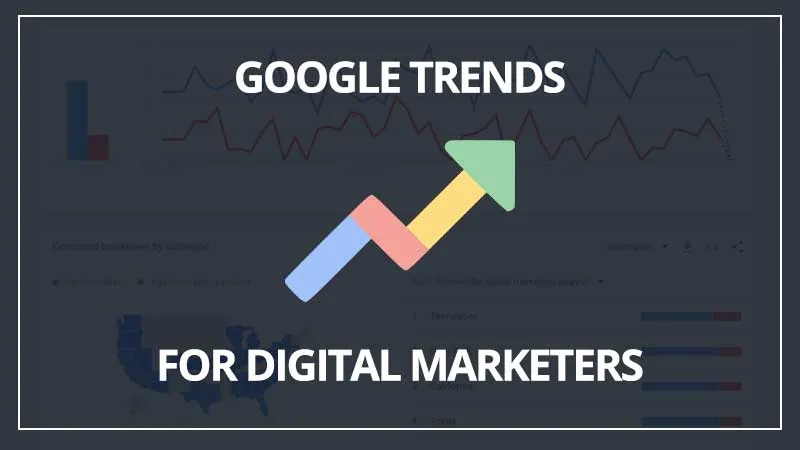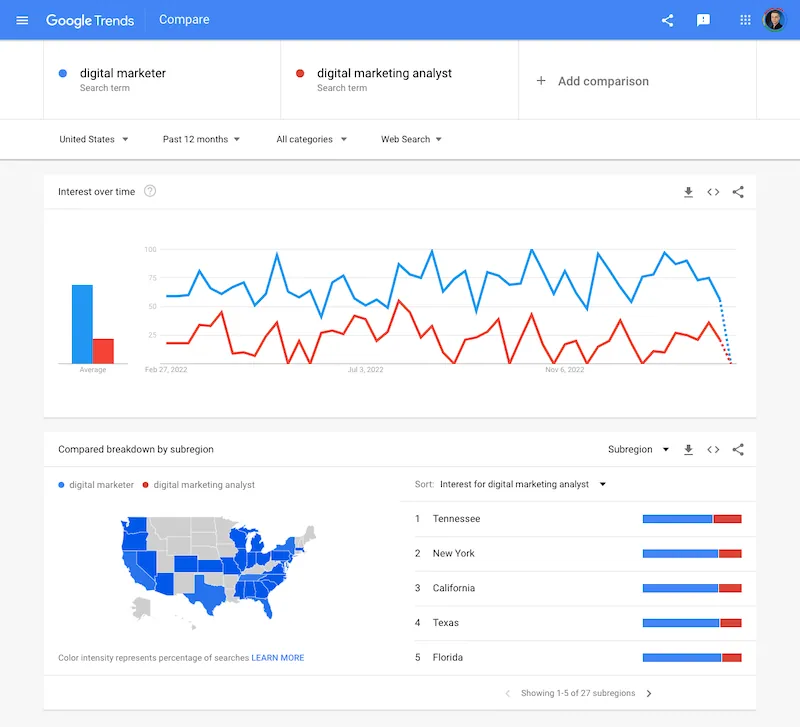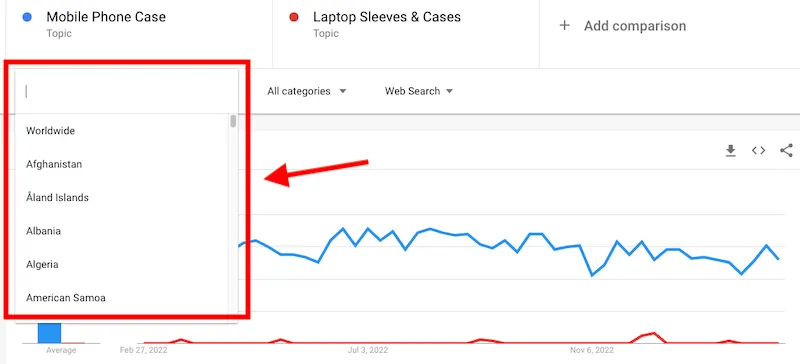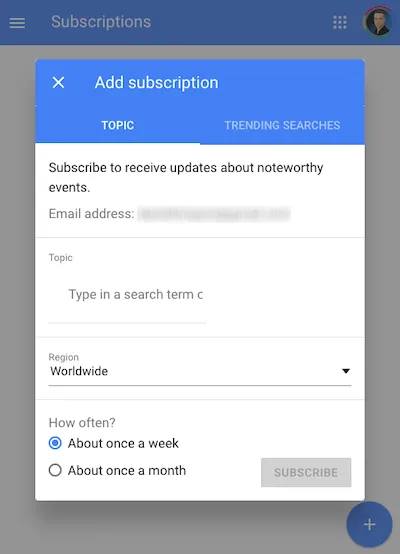Google Trends for digital marketing in a fast-changing world
In a rapidly changing market environment, understanding how consumer needs are evolving can be challenging. However, Google Trends provides real-time insights into the topics that people are searching for or not searching for.
For instance, in the United Kingdom, the search phrase “furlough” became exceedingly popular within a few days in March 2020. Such data can help you determine what’s top-of-mind for your target audience and modify your advertising campaigns accordingly.
Here are a few ways in which you can use Google Trends to obtain the data necessary to navigate business disruptions and improve your digital marketing efforts.
Easily discover popular search terms
To swiftly identify trending terms, you can refer to Google Trends’ Latest Stories and Insights section, which includes sections such as “Latest Stories and Insights”, “Recently Trending”, “Year in Search”, and more. These curated insights provide a snapshot of how people are searching for a popular topic and can give you an initial understanding of the pulse of the trend.
Search for your own interests
You can explore the popularity of almost any topic on Google Trends, beyond what is displayed on the homepage. When you search for a term, you’ll see a graph indicating its popularity over time. The graph shows a number that represents indexed search interest, or how many searches have been done for that term relative to the total number of Google searches.
You can also compare multiple search terms by clicking “+ Compare” and typing in the terms you want to compare. For example, if you’re a beauty supplier looking to understand how the winter is affecting people’s beauty routines, you can use Google Trends to compare search interest in “moisturizer” and “sunscreen” and see that the former has remained steady in popularity while the latter has decreased.
To focus on a specific time period and track emerging trends, you can use the “Past 12 months” dropdown to narrow your search and explore shorter time frames like the “Past 30 days.” Examining trends over different time periods can also help you determine if a term’s popularity is consistent, seasonal, or influenced by particular events.
Keep in mind
How to interpret the “Interest over time” chart
The “Interest over time” graph displays search interest data for a given region and time period, with numbers representing the relative popularity of a search term compared to its highest point on the chart. A score of 100 indicates peak popularity, while a score of 50 means the term is half as popular. If the score is 0, there is insufficient data for that term.
Discover related topics and search queries
By identifying related topics or queries, you can discover the top and emerging terms associated with any search, which can help you identify less apparent customer needs.
The “Rising” feature displays terms that were searched for alongside the term you entered, with the most significant growth in volume during the selected time period. Each rising search term includes a percentage indicating its growth compared to the previous period. If a term is labeled as “Breakout,” it means the search term grew by more than 5000%.
For example, during March 2020 in the US, “buzz cut” was a “Breakout” topic associated with the search term “cut your own hair.” Further research revealed increased search interest in the term “electric clipper” during the same period.
Expand your search by location
To ensure geographic relevance for your business, you can expand your search by location. If your business operates on an international level, you can use the “Worldwide” dropdown on Google Trends to examine how people’s searches vary from one country to another. This information can help you tailor your strategy to ensure that your brand message resonates with the local audience.
Refine your search by region or city
Google Trends enables you to refine your search by region or city, allowing you to identify where your search term is trending. The search results include a heat map displaying regions where the search term is popular.
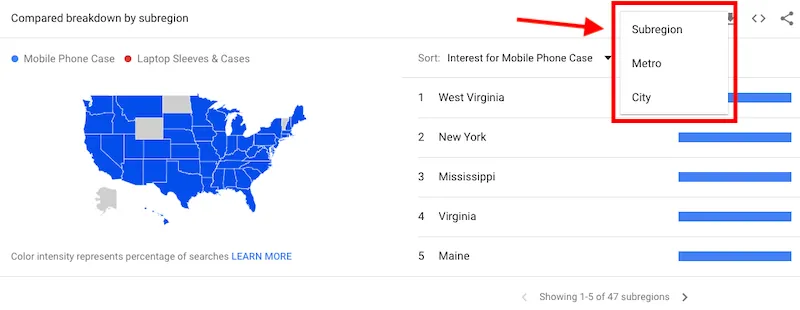
Hovering over a region activates a pop-up window showing the search volume index for that area. On the right side of the map, you’ll find a list view icon that ranks top regions or cities based on the popularity of your search term. In some countries, Google Trends provides information on a specific metro area as well.
Use punctuation to filter search results
To gain a more precise understanding of which terms people use, you can utilize punctuation when using Google Trends. Keep in mind that Google Trends has its own keyword matching mechanism, so different punctuation marks can affect your search results in different ways. Here are a few examples:
- “supermarket list”: by using double quotation marks around your search term, you can get results that include that exact term, along with words before and after it.
- microwave + recipe: results can include either the word “microwave” or the word “recipe.”
- yogurt + yoghurt + yogut: results will include alternative spellings of the word “yogurt,” as well as common misspellings.
- tool – box: results will include the word “tool,” but exclude the word “box.” This is helpful if you’re searching for a term that’s part of a common phrase that could otherwise dominate your search results.
Tip
To encompass misspellings, synonyms, related searches, close variations, and translations in any language, opt for Topics instead of Search terms.
Use categories to refine your results
If you want to get specific data for a word with multiple meanings, you can use categories to filter your results in Google Trends.
For example, if you search for “pickup”, you can add a category to clarify whether you mean a goods collection service or a type of truck. This will help you get more accurate and relevant results for the version you’re looking for.
Set up automated alerts
Streamline your search process by setting up a Google Trends alert and receive automated email updates on topics and searches in your region, saving you time and helping you stay informed while managing both work and family life.
Know as “Subscriptions”, this option can be found on the menu.
How digital marketers can benefit from Google Trends
-
Keyword research
Google Trends can help digital marketers identify relevant keywords that are currently trending. By using the “related queries” feature, digital marketers can get insights into what their target audience is searching for and adjust their content accordingly.
-
Content planning
Google Trends can also be used to plan content ideas based on trending topics. By analyzing the trends in search queries related to your industry, you can create content that is timely and relevant to your audience.
-
Ad campaign optimization
Google Trends can help digital marketers optimize their ad campaigns by identifying the best time to launch a campaign. By analyzing the search volume for specific keywords and topics, digital marketers can determine the most optimal time to launch a campaign and adjust their bids accordingly.
-
Competitor analysis
Google Trends can help digital marketers monitor their competitors’ performance by analyzing their search volume over time. By comparing the search volume of their brand against their competitors, digital marketers can identify opportunities to gain market share.
-
Market research
Google Trends can also help digital marketers conduct market research by analyzing the search volume for products or services within their industry. By understanding the search behavior of their target audience, digital marketers can identify gaps in the market and develop products or services to fill those gaps.
How Google Ads managers (and search marketers in general) can benefit from Google Trends
As a Google Ads manager, you can benefit from Google Trends in several ways to improve your ad campaigns:
-
Keyword research
Google Trends can help you identify the most relevant keywords for your ad campaigns by showing you the search volume and trend data for specific keywords. By analyzing the data, you can choose the most relevant and trending keywords to include in your campaigns (and compare them to the keywords suggested by the Keyword Planner).
-
Ad copy optimization
Google Trends can also help you optimize your ad copy by providing you with insights into the trending topics and themes within your industry. By incorporating these themes into your ad copy, you can make your ads more relevant and appealing to your target audience.
-
Seasonal campaign planning
Google Trends can help you plan your ad campaigns around seasonal trends and events. By analyzing the search volume for specific keywords related to your industry during certain periods, you can create campaigns that are timely and relevant to your audience.
-
Competitor analysis
Google Trends can also help you monitor your competitors’ performance by analyzing their search volume for specific keywords over time. By identifying the keywords they are targeting and the periods during which they are running their campaigns, you can adjust your own campaigns accordingly.
-
Geographical targeting
Google Trends can help you identify the geographical areas where your target audience is located and the search volume for specific keywords in those areas (Keyword Planner can help you with that, too). By analyzing the data, you can adjust your campaigns to target the areas where your audience is most active and interested in your products or services.
